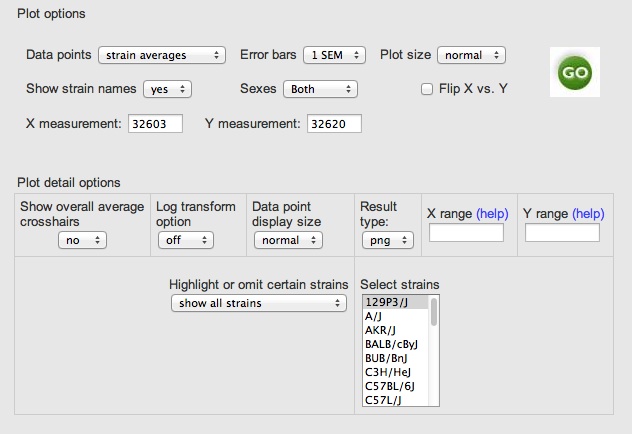
This web page was produced as an assignment for an undergraduate course at Davidson College.
Courtesy The Jackson Laboratory, permission granted.
The Jackson Laboratory (located in Bar Harbor, Maine) is the headquarters of the Mouse Phenome Databse.
The mouse is one of the top experimental organisms, and as such, efforts to catalog not only the genome but also the phenome of the mouse are underway. Like the genome, which describes all of an organism's genes, the phenome describes all of an organism's phenotypes, or its expressed traits. The Mouse Phenome Database (MPD) is a collaborative effort, headed by the Jackson Laboratory, to localize the known phenotypic data of mice into a public, online server.
Purpose
Established in 2001, the MPD was created to help researchers identify strains of laboratory mice that express certain phenotypic traits. It serves as both a categorizing tool and as a simple way for researchers to find the most useful mouse strain for their experiment, whether they are searching for new genes, analyzing Quantitative Trait Loci (QTL's; segments of DNA associated with a gene for a measureable trait), testing new drugs, examining the effects of environment on certain genotypes, or imitating human diseases. Within the database, researchers have compiled both the pure data on phenotypes and the procedures used, as well as online tools for analyzing the data and contrasting strains of mice.
Data
The MPD’s three main categories consist of data obtained from phenotype strain surveys, gene expression strain surveys, and recorded genotype variation. The genotype variation records include SNP’s, single nucleotide polymorphisms, which are points where one nucleotide in a sequence varies between individuals or chromosomes; they are useful identifying factors. All of the data is submitted voluntarily by collaborators or retrieved from public resources, then standardized and made available in the database for viewing and download. In addition to inbred strains of mice, strains with or derived from fixed genotypes are represented within the database.
Stats
As of January 26, 2014, the MPD contains 3873 measured phenotypic traits, and more than 60 million genome-wide locations of SNPs and other variation within the over 15 data sets of genotype variation. Since 2001, the MPD has released over 100 phenotype projects.
Review
Overall, the MPD represents a significant part of the database movement in genomics. This particular database allows researchers to not only search for genes and traits of interest, but also to slect strains of mice as model organisms that express phenotypes ideal for their experiment. On the database, you can browse by phenotype, genotype, strains available, and genes. Methodology and analysis tools are also accessed easily; the database offers tools for displaying and analyzing phenotypic data, correlations between phenotypes, and correlations between phenotypes and genotypes/gene expression, among others.
Example of Analysis Tools:
To reach a plot that sows the correlation between body weight and body mass index, I went to the homepage of the MPD.

From there, I went to the Analysis page:

Choosing "Tools and views" brings up the following page, which brings up three main categories of analytic tools:

From there, I chose "Scatterplots" in the second category, "Correlations and relationships between phenotypes."

This offers a number of scatterplots to choose from, at the cross-section of categories. I chose "bmi" and "bw," to obtain the following scatterplot:

This plot above shows all strains of Reed1 mice marked by their body masss index and body weight; error bars surrounding each point show the range within which the various strains fall for body weight and body mass index.
If you wish, you can play around with the settings to obtain a plot more useful to your research:

References
The Jackson Laboratory. The Mouse Phenome Project. PubMed. Genetica: Sept. 2004. 122(1): 71-74. Accessed Jan. 24 2014.
The Jackson Laboratory. The Mouse Phenome Database. Accessed Jan. 29 2014.
Summary: Mutational Analysis Reveals the Origin and Therapy-Driven Evolution of Recurrent Glioma
Summary: Total Synthesis of a Funtional Designer Eukaryotic Chromosome
Genomics Page
Biology Home Page
© Copyright 2014 Department of Biology, Davidson College, Davidson, NC 28035